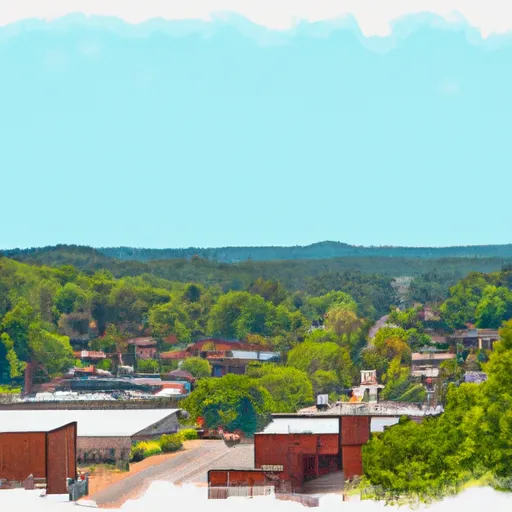-
 Snoflo Premium
Snoflo Premium
Get unlimited access to all our content
With no Ad interruptions! - Start Your Free Trial Login with existing account
Oconee
Eden Index
Climate
8.2
•
Recreation
•
Community
•
Safeguard
3.3/10

Oconee, Georgia is a charming town located in Greene County. Its climate is typically warm and humid, with mild winters and hot summers. The town is surrounded by beautiful natural landscapes, including Lake Oconee and the Oconee National Forest. The hydrology constituents in the area are diverse, with Lake Oconee providing ample opportunities for water activities such as boating, fishing, and swimming. The lake is also home to a variety of fish species like largemouth bass and crappie. Additionally, the Oconee National Forest offers opportunities for hiking, camping, and wildlife watching. Outdoor enthusiasts will find plenty to do in Oconee, making it a great destination for nature lovers looking to explore the outdoors.
What is the Eden Index?
The Snoflo Eden Index serves as a comprehensive rating system for regions, evaluating their desirability through a holistic assessment of climate health, outdoor recreation opportunities, and natural disaster risk, acknowledging the profound impact of these factors on livability and well-being.
Climate Health Indicator (CHI): 8.2
Oconee receives approximately
1157mm of rain per year,
with humidity levels near 86%
and air temperatures averaging around
18°C.
Oconee has a plant hardyness factor of
8, meaning
plants and agriculture in this region tend to thrive here all year round.
By considering the ideal temperature range, reliable water supplies, clean air, and stable seasonal rain or snowpacks, the Climate Health Indicator (CHI) underscores the significance of a healthy climate as the foundation for quality living.
A healthy climate is paramount for ensuring a high quality of life and livability in a region, fostering both physical well-being and environmental harmony. This can be characterized by ideal temperatures, reliable access to water supplies, clean air, and consistent seasonal rain or snowpacks.
Weather Forecast
Streamflow Conditions
Altamaha
Area Rivers
Altamaha
Snowpack Depths
Altamaha
Reservoir Storage Capacity
Altamaha
Groundwater Levels
Recreational Opportunity Index (ROI):
The Recreational Opportunity Index (ROI) recognizes the value of outdoor recreational options, such as parks, hiking trails, camping sites, and fishing spots, while acknowledging that climate plays a pivotal role in ensuring the comfort and consistency of these experiences.
Access to outdoor recreational opportunities, encompassing activities such as parks, hiking, camping, and fishing, is crucial for overall well-being, and the climate plays a pivotal role in enabling and enhancing these experiences, ensuring that individuals can engage in nature-based activities comfortably and consistently.
Camping Areas
| Campground | Campsites | Reservations | Toilets | Showers | Elevation |
|---|---|---|---|---|---|
| A.H. Stephens State Park | None | 618 ft | |||
| Richard B. Russell State Park | None | 598 ft | |||
| Victoria Bryant State Park | None | 685 ft | |||
| Hart State Park | None | 724 ft | |||
| General Coffee State Park | None | 216 ft | |||
| Little Ocmulgee State Park | None | 202 ft | |||
| Watsadlers | None | 680 ft | |||
| Hamburg State Park | None | 353 ft | |||
| Miltown | None | 696 ft | |||
| Ben Hill Landing County Park | None | 161 ft |
Nearby Ski Areas
Catastrophe Safeguard Index (CSI):
The Catastrophe Safeguard Index (CSI) recognizes that natural disaster risk, encompassing floods, fires, hurricanes, and tornadoes, can drastically affect safety and the overall appeal of an area.
The level of natural disaster risk in a region significantly affects safety and the overall livability, with climate change amplifying these risks by potentially increasing the frequency and intensity of events like floods, fires, hurricanes, and tornadoes, thereby posing substantial challenges to community resilience and well-being.
Community Resilience Indicator (CRI):
The Community Resilience Indicator (CRI) recognizes that education, healthcare, and socioeconomics are crucial to the well-being of a region. The CRI acknowledges the profound impact of these elements on residents' overall quality of life. By evaluating educational resources, healthcare accessibility, and economic inclusivity, the index captures the essential aspects that contribute to a thriving community, fostering resident satisfaction, equity, and social cohesion.

